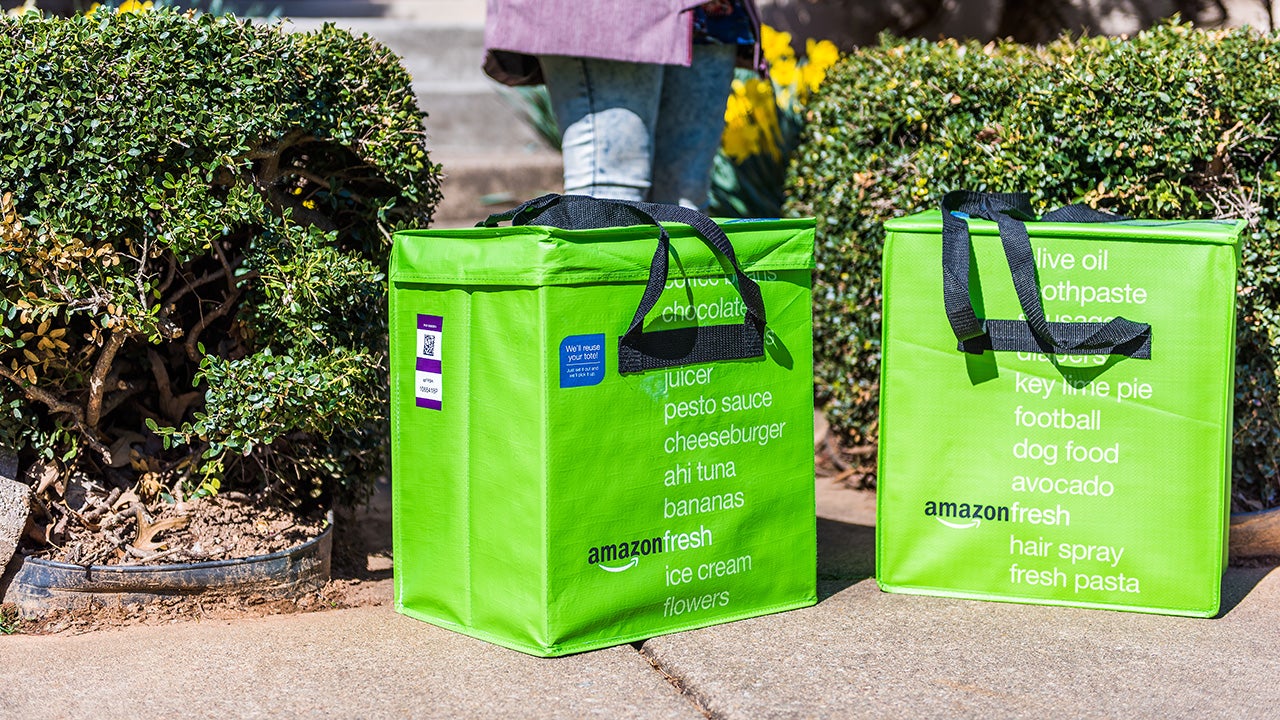Amazon credit cards change names, add benefits

Chase and Amazon have made some interesting changes to the credit cards formerly known as the Amazon Prime Rewards Visa Signature Card and Amazon Rewards Visa Signature Card*. First of all, they have new names: Prime Visa and Amazon Visa, respectively.
Cardholders of the Prime Visa, which requires an Amazon Prime membership, can now earn 5 percent back (equivalent to 5X points per dollar) on purchases made through Chase Travel and 2 percent back on local transit and commuting (including rideshare services). That’s in addition to the card’s longstanding rewards categories (5 percent back at Amazon.com, Amazon Fresh and Whole Foods Market, 2 percent back at restaurants, gas stations and drugstores and 1 percent back on everything else). The card doesn’t charge an annual fee, but a Prime membership retails for $139 annually or $14.99 per month. Lower rates are available for students and recipients of certain government aid programs.
The Amazon Visa, which is a no-annual-fee option for non-Prime members, added the same new rewards categories but with a lower payout (3 percent back) on Chase Travel. Like the Prime Visa, Amazon Visa cardholders now earn 2 percent back on local transit and commuting. The Amazon Visa’s existing rewards categories are all still in play, too: 3 percent back at Amazon.com, Amazon Fresh and Whole Foods Market; 2 percent back at restaurants, gas stations and drugstores; and 1 percent back on everything else.
Sign-up bonuses
Both cards’ introductory bonuses have been enhanced as well. A $100 (or more) Amazon gift card for new Prime Visa and a $50 Amazon gift card for new Amazon Visa cardholders, there are now additional spending rebates on both cards.
New Prime Visa cardholders can earn 5 percent back on up to $2,500 spent on anything in their first three months after account opening. New Amazon Visa cardholders get 3 percent back on up to $1,500 spent in their first three months with the card. Those bonuses represent an additional $100 and $30, respectively, assuming the spending ordinarily would have earned just 1 percent back.
How to use your rewards
Rewards on both cards can be redeemed for cash back, travel and to offset Amazon purchases at equal valuations (1 cent per point). There are other perks, too, such as no foreign transaction fees, extended warranty coverage, purchase protection, baggage delay insurance and more.
Interest rates
Like most credit cards — especially store cards — the interest rates are hefty, so the rewards are only worth it if you can pay in full and avoid interest each month. These cards charge a regular variable APR between 18.99 percent and 26.99 percent, depending on your creditworthiness.
It’s possible to avoid interest for six to 12 months on Amazon purchases. Cardholders can elect to forgo rewards on those transactions and instead opt into a 0 percent intro APR for six to 12 months on Amazon purchases of $50 or more. After the term expires, the regular APR applies.
In general, I’m a big fan of using a credit card like a debit card (paying in full to avoid interest, but taking advantage of credit cards’ superior rewards programs and buyer protections). In certain situations, the interest-free period could be worthwhile — I’d just take care not to overspend. And try, if at all possible, to pay off the full amount before the clock expires.
The bottom line
Amazon’s credit cards are among the better retail cards. For starters, Amazon is such a behemoth that many people already have a Prime membership and buy a wide variety of goods and services from the company.
These cards also offer a wider selection of rewards categories than many other co-branded cards that only offer benefits at one particular chain of stores. Restaurants, gas stations, drugstores and local transit and commuting represent a diverse grouping of routine expense categories.
Chase Travel is an intriguing addition, although I’d caution that booking through an online travel agency has a few potential disadvantages. One is that you typically won’t earn hotel or car rental elite status or loyalty points from those providers. It can also be complicated if you need to make any changes to your itinerary, since you’ll have to deal with the travel agency rather than directly with the airline, hotel or rental car company. That said, some people have great experiences with online travel agencies and would benefit from earning up to 5 percent back on Chase Travel bookings.
The main reason to get one of these cards would be if you’re an Amazon and/or Whole Foods loyalist. If you have a Prime membership and can earn 5 percent back on those purchases — with no spending cap — then that’s hard to beat. The other rewards categories and additional benefits are nice-to-haves, but easier to find on other cards.
Have a question about credit cards? E-mail me at ted.rossman@bankrate.com and I’d be happy to help.
*All information about the Amazon Rewards Visa Signature Card has been collected independently by Bankrate.com and has not been reviewed or approved by the issuer.






